We picked a random day—December 4. From midnight to midnight, we sent someone somewhere every hour, just to see what was going on. Writers, photographers, even a cartoonist and a videographer. The idea: to see what an average day tosses up in this city.
Of course, this is only one eclectically arranged cross-section of that day; it doesn’t presume to tell the whole story of Las Vegas on December 4. We couldn’t be everywhere. We’d have needed six times as many writers, 13 more cartoonists and reams of extra pages to pull that off.
But it does highlight the variety of life and endeavor in this town, from the wee hours in nightclubs to the soundbitten halls of government meetings to the quiet rooms of a hospice where people are facing their final deadlines to the midnight partying Downtown. A good day for some, a bad day for others. Here’s what we found ...
Two tales of midnight ...
... at Frankie’s Tiki Room
Walking into the midnight opening of Frankie’s Tiki Room, I saw nothing out of the ordinary. It was just a typical-amazing Vegas dive bar. There was the cloud of mood fog that greeted me, swelling up and around the ceiling-size Tiki gods. The wall of Hawaiian shirts saddled up to the bar. A couple of flamboyant people flamboyantly enjoying a secluded seating area. A table of owners and PR people, including one P. Moss, identifiable by the nearby wooden carving of his face. And the world’s only 25-cent Vice Tester. This living kaleidoscope of Las Vegas was spinning to the beat of a Hawaiian-hipster soundtrack. You know, the usual.
Seeing my distress at having nothing to write about, Bamboo Ben, Tiki bar designer and builder extraordinaire, gave me a tour of his handiwork, beginning with the glowing puffer fish and ending at the centerpiece, a towering Tiki god carved by CrazyAL.
“Get on your knees,” Bamboo Ben commanded.
“Um, no.”
“Get on your knees,” he repeated.
“Why?”
“I’m married, look,” he displayed a ringed left hand. “Now get on your knees.”
I looked around. A small crowd of authentically hip locals was watching. Even the bumper-ball players had paused to stare. That left me no other option. Reluctantly, I put one knee on the ground and then the other.
“Now bow down and pray to the Tiki god.”
“What do I say?”
“Anything.”
I gazed up at the red dice-eyed wooden idol called High Roller and said, “Cheers,” lifting my Bombora Blast, one of eight of Frankie’s original concoctions.
In response, the god emitted a thick cloud of fog. Bamboo Ben helped me up and showed me a gizmo that looked like a garage-door opener.
“Remote-control fog machine,” he said. –C. Moon Reed
... at an AA meeting
Members of Alcoholics Anonymous share information in much the same way as Grateful Dead fans used to swap bootlegged recording of live performances. Often you’ll hear someone say, “Got a good 10 o’clock meeting? The Steps Club is closing.” Or, “A friend just turned me on to a really good noon women’s stag meeting up at Stairway II.” Over the past several months I’d been hearing about a really strong midnight meeting at the Commercial Center, in a room on the second floor above the Las Vegas Lounge. Like the lounge, the meetings cater primarily to a gay audience, but the midnight meeting is said to be an exception.
Finding the room is easy, because anyone who has been around AA for a while knows how to detect a recovery meeting about to begin. If you see a cluster of people smoking and dropping butts into coffee cans, you’re there. If you smell coffee as strong as road tar, you are also there. I circle around the spacious Commercial Center parking lot and spot a couple of men climbing the stairs toward another group of men smoking, talking and nodding. I’m home.
I take the steps, two at a time, and when I hit the top I shake hands with a guy who introduces himself as “Steve.” “I see you’ve taken the steps,” he says, repeating one of the really old jokes in AA and grinning as smoke seeps from his mouth. “The fourth was a bitch. I’m better at 12,” I say, not so jokingly. We duck inside, and hanging from the walls are the familiar framed AA slogans, “Live and Let Live,” “Easy Does It,” “Think Think Think,” “But for the Grace of God.” Also posted are the long white posters listing the 12 steps and 12 traditions. People who read these but never actually perform step work are said to be taking steps “off the wall,” and I know a lot of people who have done just that but have never relapsed.
The long, narrow room is dark except for a few desk lamps. Metal card chairs, the type you never seem to encounter except in church basements and AA meetings, ring a couple of fold-out tables. A couple of baskets of cream-filled cookies and two boxes of what now are day-old doughnuts rest on the tabletop. I take a seat away from the table, against one of the room’s wide windows with a view of the entire center. I look over my left shoulder, and off in the distance is the Green Door swingers’ club. To my right, seemingly just feet away, looms the Stratosphere. I think, welcome to Vegas AA.
Suddenly a voice shouts, or so it seems, that the meeting is starting, and the small talk gives way to some really big talk. The guy leading the meeting is one of the people I can really identify with, whom I really like in AA, named “Ike.” Ike fires off his message straight, no funny stuff, and I know he takes a lot of meetings. I’ve seen him around for years, and the fact that he’s taken a midnight-meeting commitment shows me he’s serious. I’m reminded that I should do more work in AA, give more back.
This meeting follows what we call the “Monterey” system, in which a person speaks and calls on someone else. I have no idea why they call it Monterey, but this is a format that helps keep AA interesting. I’ve talked to people who say they pray they won’t get called on unexpectedly, and spend the entire meeting running through their pitch in their head in case someone calls them out to share. I am one of those. I hate sharing, and I share that I hate sharing. The talk swings around the room. There is the newcomer sitting next to me taking notes in his Big Book, in which several passages are lined with yellow and pink highlighter. We read How It Works, which is common in AA meetings. My favorite passage is, “No one among us has been able to maintain anything like perfect adherence to these principles. We are not saints. The point is, we have been willing to grow along spiritual lines. We claim spiritual progress rather than spiritual perfection.”
Past the halfway point of the meeting, after we’ve passed the basket in observance of the seventh tradition (which states that AA is to be fully self-supporting, declining outside contribution), Ike shares his experience, strength and hope. He’s mesmerizing in how he tells the group that without the program, he would certainly be dead. He has that attitude of gratitude we hear about so often, but it is not just talk. His presence, his willingness to lead this meeting, is the real act of gratitude. I start to get lost in his words, staring out the window at the parking lot, when he says, “You! We haven’t heard from you in a while.” I feel a charge of adrenaline jolt my chest, and I look around the room to the group of 15 people—14 men and one woman. I introduce myself, and, stunningly, I can’t find the words. So I say that. I say how nervous I get in a room full of AA people when I’m asked to participate in a meeting. It’s because I hate getting real. I can bullshit all day, but ask me to speak for even 30 seconds in an AA meeting about what is happening in my life, and I seize up and my voice quakes. But I keep talking, and like a jazz guitarist finding the notes, I arrive at a point: “I hear a lot in meetings about how we have run through peoples’ lives, and a lot of us laugh at that. I guess it’s a defense mechanism, because we can’t deal with reality sometimes. But hurting people, stomping the feelings of your friends and family and those you love, is nothing to be proud of. We can really hurt people, us alcoholics. To me, it is not a badge of honor to have hurt anyone. That’s why I keep coming back, to be reminded of that, because if I stay away long enough, I will forget, and for this alcoholic that is no place to be.”
I feel myself getting chills and wondering where these words are coming from. Around the room, heads nod. I finish when I’m finished, without rambling into verbal oblivion, and afterward I call on the lone woman in the room and take a long drink of lukewarm coffee. I sink into my chair, emotionally spent.
At the end of the meeting we hold hands and recite the Lord’s Prayer, and Ike moves over and hugs me. “Thanks for your share,” he says. We walk downstairs and see a couple of Metro units sitting in the parking lot, just checking out the scene. The air is cool and crisp, invigorating. It is just after 1 a.m., and I know I’ll sleep well tonight. I’ve contributed. I’ve given as much as I’ve received. –Anonymous
1 A.M.
LAX, inside the Luxor
Outside of Vegas, one might not think to visit a nightclub to “see how the other half lives.” But a nightclub’s social mores make for good barometers of power and influence. The pecking order will always reveal itself. Of course, that doesn’t necessarily make for good entertainment. Unless one is in Vegas, where the other half often comprises celebrities. Seeing how they live—or party anyway—has a far more obvious appeal.
LAX is juuuust a skotch more than half-filled—not bad for a weekday, though not exactly killin’ it, either. It’s casual, easygoing … doable.
As song gives way to song, the night settles in and everyone takes their places, assuming the position for the play about to begin. Now comes the seeing and being seen, in which the population of the VIP stage looks out, over, down upon or through the crowd of have-nots before them. In turn, the not-so-VIPs look back up with varying degrees of interest, awe, lust, boredom, indifference and hatred.
Onstage, Jack Osbourne is repeatedly cornered by women who want to get to know him better, while a little person from Jeff Beacher’s menagerie of characters does his best to look and—after liberal amounts of booze—sound like Osbourne’s father. Chuck Liddell is among the fray, too, with his own entourage, proving that celebrity is a status and once bestowed, the particulars of who-came-with-whom no longer matter. The upper level is the upper level, its population all bearing the stamp and coveted striped wristbands of approval. Above, they see and enjoy being seen; below, the tourists see and take iPhone pics for their Facebooks.
A suited exec, water in hand, leans casually over the banister of the central staircase, safe within the confines of the VIP stage and DJ booth enclosure. He surveys the room along with the rest of the VIPs and pronounces tonight’s inhabitants not the prettiest crowd, but gives them an A-plus for energy. This energy he speaks of must be residual from last Saturday, as they’re not quite hitting a 3.0 on the Richter scale. Yes, there are pockets of jollity, mostly centered around buckets with bottles of Grey Goose the size of cricket bats poking out of them, but for the most part, they stand and sway and drink and text, all in place, all facing the VIP stage.
This will be the major occupation for the night, the performance varying little from club to club with the exception only of the costumes, actors and choices of refreshment.
Of course, this is mid-recession clubbing, so we’re in unfamiliar territory. The last time America had to party its way through an economic recession, in the early 1990s, we did so in plaid shirts and Doc Martens and to the tune of Radiohead’s “Creep.” They may not be the prettiest crowd, but at least this time the khaki and button-down-shirt look is limited to the men. It’s a Wednesday night at 2 a.m. in Vegas—I still think we’ve come a long way, baby. –Xania Woodman
2 A.M.
Wasted Space, inside the Hard Rock
Tonight, Wasted Space plays host to bartender Dillon Reese’s inaugural “Ugly Sweater Birthday Extravaganza,” the first of at least five similarly themed parties to be held this holiday season in various nightclubs.
By a certain point in the party, everyone who came with the ugliest of sweaters and the best of intentions has accepted the unfortunate fact that wearing big, thick sweaters in a hot, crowded nightclub makes for a genuinely sweaty experience, and is ultimately forced to shed the extra clothing.
When the remaining partygoers have sufficiently dwindled to a group of awkwardly underdressed clubgoers, piles of wrinkled, alcohol-stained sweaters begin to appear all over the place, leaving the club’s confused bussing staff to decide whether to keep the discarded sweaters, take them all to lost-and-found or simply throw them away.
Decision made. May they rest in ugly-sweater heaven. –Jack Colton
3 A.M.
Walmart, 540 Marks St.
How can you walk in here at 3 a.m. and not feel like you’ve reached the vast, fluorescent, cut-rate center of the American soul? Like our souls, it’s spacious and overstocked with stuff we don’t really need. Like our souls, it’s obsessed with a bargain.
Nothing much going on tonight; the guy manning the Del Taco drive-through across the parking lot will back me up on that: “Last night we had more people, but this is a slow night,” he’ll tell me when I leave here. If I describe the couple trudging their cart toward the register as “zombie-like,” would you take it as an anti-Walmart metaphor? Because what I mean is that they look greenish and blank, unspeaking and barely human.
I wander. The office supplies aisle. DVDs. In books and magazines, a gal who works at the attached McDonald’s idles between a Jonas Bros. fanzine and a Spanish-language book about Mother Teresa.
If he were still alive, Edward Hopper would die for the chance to paint this. The artist whose painting “Nighthawks”—you’ve seen it, three people languishing in an all-night diner—defined the alienation in the American soul would have had a field night updating his work here.
Power tools. Men’s wear. Women’s wear.
Most of the people here now are employees, stocking shelves for tomorrow. (It must suck to be working at this hour, I think, before reminding myself, that’s what you’re doing here, dork.) In women’s wear, three of them are griping loudly about a co-worker, never mind that a customer is standing right there. Another is singing with an utter lack of self-consciousness; it sounds like an R&B number about wanting him back, but then, don’t they all. The workers look at you with their—well, I wanted to say “deadened eyes,” and that would have been an anti-Walmart metaphor, but I suppose the truth is more complicated than that, and, anyway, someone wants these jobs bad enough to be here at 3:24 a.m., slinging groceries onto the shelves.
“Long years of doing it,” one stocker says when I ask how he handles working at this hour. “Plus, it helps to be born and raised in a 24-hour town.” –Scott Dickensheets
4 A.M.
Blueberry Hill, 2855 N. Green Valley Parkway
I didn’t quite realize how cold it actually gets at this hour. Won’t get much argument from the couple in the corner booth—their motorcycle helmets perched precariously on the vinyl lip—who barely look at me, preferring instead to snuggle together, staring intently at their mugs of steaming black. I get more attention from a security guard on a Segway outside than I do from my newspaper-reading neighbor, a guy whose shaved head is starting to show stubble. As he gets up and dons his leather jacket, I notice my admirer is already on the other side of the parking lot. Those Segways haul ass.
Although my waitress, Sheila, tells me the crowds are typically much larger, she also points to the parking lot, which has been taped off for resealing, or resurfacing, or whatever the hell it is they do to parking lots. Anyway, potential customers have veered off to alternatives, she posits. I certainly don’t argue.
Scrambled eggs and hash browns taste damn good this time of morning, especially when your coffee cup is never empty. Could it be the piped-in combo of Sinatra, Whitesnake and “Chances Are”?
“I see you made it in okay,” interrupts my reverie. Sheila, looking every inch the type of waitress you’d expect to see this time of the morning, delivers that rote line to the proud owner of what is almost a widow’s peak—practice, practice. Time to go remember where my car is. But one last look up—and further up—at a slender giant in overalls too small for him, carrying a bottle of Gatorade. –Ken Miller
5 A.M.
Olympic Garden, 1531 Las Vegas Blvd. S.
The lighting is always the same, and the room is without windows.
No dancers are on the stage at this hour. The colored lights swing back and forth past the stripper pole and a single sock, inexplicably the only object left on stage.
One table in the club has a group of four young men dressed like extras in a rap video finishing off beer and talking to a very, very thin dancer with fake blond hair. They leave. She heads over to where the only other customer, a 41-year-old man, sits, looking barely awake. “What’s your name?” he asks her. She answers, “Rio.” She sits next to the man just as the sound of a text message arriving can be heard over the music.
“It’s my sister,” Rio says. “She’s here to pick me up. I have to go. If you come back tomorrow, ask for Flower.”
“I thought your name was Rio?”
“Flower is better.”
She leaves.
Another dancer, sitting in a corner of the club, stands up. She stretches and lethargically comes over to take Flower’s place. The man asks: “What’s your name?”
“Rio.”
It is 5:30 a.m. –Richard Abowitz
6 A.M.
6:13 a.m.: The photo our photographer didn’t want you to see. Yes, we were able to pick the day of this 24-hour project, but we unfortunately weren’t able to control the ticky-tack weather that turned Beverly Poppe’s best efforts at capturing a Las Vegas sunrise into, well, soup.
7 A.M.
Aboard the Deuce bus, on Eastern Avenue
Eight observations
1. The bus, unlike the bus stop, is clean. Shiny. There’s no gum stuck on the floor or seats, there’s no graffiti, there are no cigarette butts.
2. The dollar-bill fare-eater does not make change: $2.50, if you don’t have change, means $3 for a transferable ticket.
3. The bus driver leaves the bus parked, running and unattended while he goes to get a cup of coffee from McDonald’s. What if it lurches into forward motion? Will I be forced to run downstairs (It’s the Deuce! Get more for your money and sit upstairs where the view is better!) and take control of the wheel, wrestling this wild beast to the curb?
4. The view of Red Rock from atop the Deuce up on the hill of South Eastern Avenue in early morning light is incredible.
5. Hood up and headphones on: the way that 50 percent of riders take their commute.
6. Bicycles pass us. We never catch up.
7. By the time the northbound Eastern 110 makes its way from St. Rose to Sunset Road (40 minutes), there are 25 people onboard, including two young moms with two toddlers each, three men in construction boots, an elderly white couple and a black man in a sharp business suit.
8. The hum of the engine, the squeaking of the brakes, the beat coming from another passenger’s headset and the quiet murmur of a conversation in Spanish two rows back make for excellent napping conditions. –Stacy J. Willis
8 A.M.
Corner of Pebble Road and Eastern Avenue
Comments from some of the 26 men standing alone or in small groups, chatting, sipping coffee and watching the road for signs of the pickup trucks or minivans that mean work for a few days or a couple of hours. –Sarah Feldberg
“There’s almost no work in November, December and January. There’s more work when it’s hot.” –Pedro, 28, Veracruz, Mexico
“People drive by and insult us. … I had a friend who worked a job, and at the end of the day they didn’t pay him. There are some bad people, but there are bad people here, too.” –Juan, Mexico City, Mexico
“I’ve been here [on this corner] two weeks, and I haven’t worked. But I’d rather be here than in my apartment.” –Alfonzo Estrada, 40, El Salvador
“One day I was standing over there and they grabbed me and put me in jail for three days. … We’re not doing anything, you understand? Only asking for work.” –Pedro
“I think it’s all because of the economy. Christmas time is very slow, but I think this economy makes it worse.” –Alfonzo
“I get here at 5 a.m. or 6 a.m., and I stay until 1 or 2 p.m.” –Pedro
“A friend suggested I move here. … After a month I wanted to leave.” –Juan
9 A.M.
Nuclear Regulatory Commission’s Hearing Facility, Pacific Enterprise Plaza, 3250 Pepper Lane
You believe U.S. Congresswoman Shelley Berkley when she says it: I will lie down on the tracks in front of any train full of nuclear waste headed for Nevada.
People are still trickling into the federal Surface Transportation Board’s public hearing on a proposed 300-mile railroad line connecting Caliente with Yucca Mountain. Outside, there are a dozen protestors from PLAN of Southern Nevada and the Sierra Club hoisting signs: Green Energy; No Nuclear Power!; Don’t Waste $ on Nuclear Rails; Yucca Mountain is Sacred Land.
Berkley could’ve sent a representative to speak for her; Sen. John Ensign did. But instead, she’s sitting here on time, the very first speaker, blaring red lipstick in place and business suit crisp, facing a board of federal officials who seem prepared for a long day. “Good morning and welcome to the great state of Nevada,” she begins. “... I know I speak for the majority of Nevadans when I say that we vehemently oppose Yucca Mountain and transportation of nuclear waste to our home state.”
More people are sitting down; upward of 50 now in this large meeting hall where the Nuclear Regulatory Commission normally meets. A Native American man with a ponytail, business suit and cowboy boots squeezes into a crowded aisle; the Native American woman next to him is reviewing some notes. In addition to politicians, representatives of the Western Shoshone and Timbisha Shoshone tribes are scheduled to speak, along with activists, ranch owners, railroaders and a guy who runs a hot-springs resort that would be affected by the railroad.
“... The Caliente rail line will be of no benefit to families in Nevada and across the nation who will be at risk from shipments of this toxic garbage,” Berkley continues.
Two tan ranchers take a seat, bolo ties and cowboy boots in place. In the back, a row of TV cameras and reporters watch.
When she has finished her statement, Berkley fields questions from the panel. She calls the proposed project a “boondoggle” and says President-elect Obama will not carry forward the plan.
“And at the risk of sounding overly dramatic,” she tells the panel, the first train carrying the first barrel of nuke waste into Nevada would face “me lying down on the track. I hope you’re taking my poor aging body into consideration.”
After Berkley wraps up her testimony, she heads for the exit.
On his way in, walking alone toward the building from the street parking, Mayor Oscar Goodman is striding fast; he’s up soon.
“Are you going to give them a piece of your mind, Oscar?” a woman at the door asks.
“You bet I am,” he says. “You bet I am.”
It’s 9:55. –Stacy J. Willis
10 A.M.
Regional Justice Center, 200 Lewis Ave.
Ten a.m., the day before O.J. Simpson learns his fate for robbing a pair of sports-memorabilia dealers at Palace Station. Judge Jackie Glass’ courtroom, a tiny affair perched atop that sandstone tower known as the Regional Justice Center.
It’s eerily business as usual, almost as if no one seems to register that Judge Glass is about to drop it like it’s hot tomorrow and hand down the Sentence of the Century that will send Simpson to prison for at least nine years.
Five men wearing prison blues and handcuffs sit quietly in the jury box. One is outfitted with a pair of protective orange foam pads that cover his hands, presumably to keep him from hitting you.
These men are in court this morning to discuss their competency. It’s a rapid-fire litany of legalese mumbo-jumbo between Glass and the public defender. One of the defendants, I discover, is accused of punching a bus driver in the face. He’s ordered to the Mental Health Court.
“I’ve seen you before,” Glass tells him. “This is your chance now. Do the program. The program works if you work it.”
It’s eventually nods and yeses down the line, and that concludes the morning docket. Glass calls for a recess and leaves the bench. The men are tied together and led single-file from the jury box to their little magic room at Prisonland.
With Glass off the bench, Walter the bailiff now holds court. If he weren’t sporting a gun, you’d swear he was the court jester.
He jokes about how he considered smuggling in a football for O.J. to sign, maybe selling it for $100,000 on eBay, but Glass nixed the idea.
“She says, ‘No. If you do, I’ll fire you.’”
After a few minutes of silence, Walter continues: “We’ve never had a case like this in the history of Nevada.” He leaves the courtroom to take a call from his daughter.
The clerk and the public defender gossip about a colleague whom I gather is pretty, successful and surprisingly single.
“She’s too picky,” one says.
“She’s too Mormon,” says the other.
Walter returns. His daughter called to see if she can get a seat at tomorrow’s sentencing. (She can; her friends can’t.)
“Got to get ready for the Juice,” a chipper Walter says as he starts rearranging chairs.
He expects the Los Angeles cast of Simpson’s 1995 acquittal trial to fill his courtroom, including Marcia Clark, Christopher Darden, Mark Fuhrman and the Goldman family. (Only the Goldmans will come.)
Walter asks a co-worker: “So, do you think she’ll throw the book at him?”
“Yeah,” comes the unmoved answer.
It’s 10:32 a.m. “I’ve got to eat something,” says Walter, who was outed as a diabetic when Glass publicly chided him on Day 1 of O.J.’s trial for nipping at the jury’s chocolate-chip cookies.
Walter inquires about a court clerk’s Hot Pocket.
“Did you put your mouth on it?” he asks.
“Yeah.”
“Then I don’t want it.”
Glass pops her head into the courtroom. She isn’t wearing her judicial robes. Instead, she’s outfitted in a sensible, stylish light-pink sweater set.
The court is waiting for a live Internet feed from Northern Nevada for bodybuilder and convicted murderer Craig Titus, who seeks a motion to modify his sentence or withdraw his guilty plea. Glass sentenced Titus to at least 21 years in prison in August for killing his personal assistant. It was her most famous case until O.J. came along.
But the video can’t be patched through. “We can put a man on the moon, but we can’t make a call to Northern Nevada,” a frustrated clerk says.
A trio of dark-suited attorneys begin to bullshit with each other while they wait for the connection. The clerk flosses her teeth while she plows through paperwork.
10:41 a.m., and Glass is back on the bench. The teleconference still hasn’t been patched.
“We gave them so much notice ahead of time,” a frustrated Glass says before leaving the bench.
“We need one of those kids that’s a hacker,” Walter says. By 11 a.m., the connection is still not made. –Nick Divito
11 A.M.
Roller coaster at New York-New York
The surrounding arcade is pretty much a ghost town, but there’s a steady trickle of people showing up to ride the roller coaster at New York-New York just after its 11 a.m. opening time. Kym and Trish, both 28, are in town for a wedding, Kym from Wales and Trish from Montreal. They saw O last night and are now in the mood for a different sort of Vegas experience. “Fourteen bucks is a bit much for a roller coaster,” Kym says, but Trish shrugs it off: “You’re only here once.”
After the ride, Trish gives the experience a resounding “Whatever,” although both women seem pleased enough. Was it worth the 14 bucks (plus 50 cents for a locker to hold their stray belongings)? Trish shrugs again: “Everything in Vegas is overpriced anyway.” –Josh Bell
Noon
UNLV
There isn’t a Cinnabon, but the new-ish UNLV student union resembles a shopping-mall food court. The chairs are an assortment of orange, red, gray and green, and a hodge-podge of fast-food options (and a few healthy choices) are all housed downstairs in the union. Judging by the number of students waiting in line at any one of the food counters, the recession doesn’t exist here. Most students are studying for finals on their laptops (or wasting time on Facebook), and I can’t find a single person eating Ramen or a homemade sandwich. In addition, the vast majority are clothed in what looks like newly purchased (and pricey) fashionable attire. I’m surprised to see quite a few female students wearing killer stilettos I wouldn’t even wear to a nightclub, let alone walk on around UNLV’s giant campus. Whatever happened to sneaking into the back of a lecture hall in pajamas and flip-flops?
There are none of the tree-hugging, granola-munching, patchouli-wearing students I associate with my first real college experience at SUNY Purchase. Heck, the Purchase student body probably would have organized a weeklong sit-in to protest an on-campus Starbucks (UNLV has one of those, too). On a more eco-friendly note, UNLV does have a wonderful recycling program, so I don’t feel completely out of place.
Perhaps I’m overly critical as I wave goodbye to my mid-20s. Perhaps the students I’d associate with and feel comfortable around avoid the union at all costs. Or perhaps I’m just cranky and craving an Orange Julius. Oh well. A $4.47 Jamba Juice will suffice. –Deanna Rilling
1 P.M.
McCarran International Airport
McCarran is never empty at 1 in the afternoon, but today it is not very busy. The ticketing gates are sleepy. The background clink of slot machines is like a lullaby. Las Vegas is a leisure destination, and today the airport feels like it’s part of that mix. Bars. Stores. More importantly, TVs and chairs. Take a load off, watch the world go by. No frenetic scramble for flights and bags. No drama. 1 p.m. at McCarran is like watching one of those time-lapse videos, where the buzzing goes around you but is kept at a safe distance. The worried passengers—“Listen to me, drop Grandma off at the house”—the worker hurriedly loading Snapples onto a cart—all of them take on a serene glow. It’s the closest McCarran gets to your living room, on a day off, with the soaps on.
Somewhere near the ticket counters, in those banks of chairs by the entrance doors, by the pay phones—the seating where you are bound to run into the most interesting characters—there sit two middle-aged couples from Minnesota. They’re on their way back home. You can judge the state of the economy by the deals they’ve gotten: $571 for two people, for four nights at the Golden Nugget. A Chevy Suburban rental for four days for $48! We talk about buffets and their favorite moments on their trip, and then Chuck pulls out a box of Twinkies. Airline food being what it is these days, he often brings Twinkies when he flies. He passes them around. They taste delicious. You can never have too many Twinkies. Yeah, it’s a Twinkies kind of day here. –T.R. Witcher
2 P.M.
Las Vegas Strip (in front of Bally’s across from the Bellagio)
People-watching on the Strip, by the numbers:
971: steps it takes to get from Bally’s to my car in the Flamingo garage, according to my cell-phone pedometer
2:38 p.m.: when the sun finally peeks out from behind the behemoth that is CityCenter
56: people carrying alcohol (14 of those with booze in obnoxiously oversized containers)
16: fanny packs
13: cowboy hats
0: mullets, though they may be hidden under cowboy hats
7: passing construction workers
1: construction worker who looks like Billy Gibbons from ZZ Top
6: kids in strollers
6: cute old-folk couples holding hands
4: number of times “Luck be a Lady” plays in front of Bally’s in one hour; rollerbladers in Ice Capades-style outfits promoting the show Ice; tourist pictures I’m in the background of; number of nightclub promoters trying to get me to go to their clubs
3: times the “Girls Direct to You” truck drives by; also the number of times Anthony Cools’ billboard drives by
2: people picking through garbage (“You should see Janie. She has such beautiful stars on her nipples.” –One of the garbage-pickers talking to himself after finding an escort-service flier)
M&Ms and Victoria’s Secret: Most common shopping bags people are carrying. Chocolate and underpants never go out of style. –Deanna Rilling
3 P.M.
Nathan Adelson Hospice, 4131 Swenson St.
Jane Russell, a volunteer, arrives at Nathan Adelson Hospice. With her is Scout, a collie that Russell rescued and then had trained as a therapy dog. She thinks Scout is about 8. Both volunteers, dog and person, have a kind, gentle and soothing disposition. Scout does not run about barking but calmly allows himself to be petted and is quick to nuzzle any friendly hand that greets him. Russell says they both enjoy the work.
They walk down a hallway, past a room in which dozens of exotic birds fly about, seemingly carefree. The hallway ends at a station where three staff members gather near one open door. Russell greets the staffers and then heads directly to the open door. She goes into the room with Scout at her side, offering a friendly greeting as she enters.
Inside they meet patient Martha Steelman, 65. Steelman has short gray hair and a feisty disposition. She is not confined to a bed. And though her memory turns over and confuses things, otherwise she does not seem ill. She is waiting for a call from her sister: “I really wish she would call me back. I have some tough decisions to make in the next few weeks.” Except for this allusion by Steelman, Russell does not ask the patient about her health. She does not need to. Every patient at the hospice has a terminal diagnosis. One misconception of the hospice is that patients choose to live there for long periods of time while waiting to die. Most patients, Russell knows, actually are stabilized and then sent home. Still, many die. The reality is that she and Scout have never met the same patient twice. They are always gone by her next visit. She volunteers once a week, every week, for about four hours.
Steelman tells Russell about having a dog when she was young. Russell asks her about her family. Many of the people Steelman talks about, she notes a bit acidly, are already deceased, including one of her children. Russell listens to all of the stories, friendly and encouraging, while Scout settles nearby. Slowly, Steelman’s morbidity seems to lift a bit. Halfway through the visit, Steelman is cheered enough that she decides to eat some ice cream.
Just before meeting Steelman, Russell reflected: “A lot of this is just spending time with someone, and Scout is the reason we are together. But it is also about me being there and talking with the person.”
Steelman’s memory is a little shaky and contradictory, because she is not well. But still she wants to talk. And talk she does—about her youth, her moves around the country and her family. For an hour Russell listens, smiling and nodding and chipping in an occasional word as both women occasionally reach out absentmindedly and pet the contented Scout. -Richard Abowitz
4 P.M.
Police ride-along
By the time I head to Metro’s Downtown area command building just south of Cashman Field, I’ve already watched the training videos at police headquarters and filled out all the waiver forms, so if I get shot in the next hour, I promise not to sue the department.
The man I’m meeting is James Misuzaki, but on the piece of paper I was given it’s spelled Misaraki—and so when I walk in, I’m expecting someone white, with an Eastern European pedigree. Not the trim Asian sergeant in his early 40s, about to lead me on a police ride-along through Downtown Vegas. Misuzaki wanted to be an electrical engineer growing up in Southern California, and he hated cops. “They were assholes”—harassing him and his friends, embarrassing them. He remembers one cop jabbing him in the stomach with a flashlight.
But as his friends joined the force, one by one, he started doing ride-alongs, and his hostility thawed. When he moved to Vegas he planned to follow in his father’s footsteps and become an electrical engineer. But he kept doing ride-alongs, now with Metro, and became a cop instead.
He’s got everything the modern officer needs—an iPhone, a Panasonic Tough Book computer and two shotguns in the back. He tries to remember his roots as he makes the rounds. We pull up alongside a kid blaring his music. “Just give him a look,” Misuzaki notes with a chuckle, “he’ll turn his music off.” Sure enough, the kid does.
We patrol through the two-story block of apartments near Charleston and Eastern, down a one-way street. We drive past the security cameras along East Fremont, and as the sun heads swiftly toward a spectacular, cloud-strewn sunset, we drive south on Las Vegas Boulevard toward the neighborhood known as Meadows Village, in the shadow of the Stratosphere. Also dubbed Naked City, this used to be the place where showgirls lived in the ’50s and sunbathed topless. Now it’s a rough bit of the city where the Barrio Naked City gang operates. The disparity between the lights and shadows of Las Vegas is particularly apt at the end of this one-way street of beat-down homes and murals, at the very foot of the Stratosphere and its neighborhood condos, all dazzlingly lit.
It’s then that the call comes in about a possible suicide attempt at the railroad bridge over Charleston, just west of Commerce. Traffic is tight at rush hour, but Misuzaki doesn’t hit the lights. Rookies tend to go lights and sirens—the technical term is a Code 3—at the drop of a hat, raising the risk for getting in an accident. The veterans know better.
When we get there and scale up the embankment and onto the tracks, there are already half a dozen officers assembled. The man, bearded, his eyes half-dead, was allegedly doing jumping jacks at the edge of the tracks. Now he is not saying much of anything and looks extremely docile. No one knows whether or not he was really trying to kill himself. Three vagrants are hanging out on the tracks, too; the cops give them all quick pat-downs and send them on their way—Mr. Jumping Jacks gets led in cuffs to a squad car so he can be medically evaluated.
As darkness settles in, the rest of the ride-along is mostly starts and stops. Nothing major tonight, just endless loops around Charleston and Sahara and Maryland Parkway and the upper end of the Strip, moving down this street or that. Most of the calls are being handled by other officers. At the end of my shift, we find ourselves at the Silver Saddle off Charleston, where the bar owners called in a report of a fight earlier between two customers. The place is quiet now, and the beefy bouncer doesn’t look too worse for wear, but the combatants managed to yank the handle off the rear door before leaving. There’s not much Misuzaki and another officer can do, other than promise to hurry back if the guys return. That’s the way it is today—it’s like we’re chasing after storms, and they’ve all blown through after we get there.
Misuzaki tells me that next time I need to do a 10-hour shift—really get the feel for it. “When nothing happens, it’s a boring call; that’s why we look forward to hot calls.” –T.R. Witcher
5 P.M.
Las Vegas Hilton Sportsbook
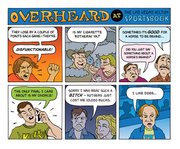
6 P.M.
Arts Factory, 102 E. Charleston Blvd.
Thursday at the Arts Factory: a First Friday preview. Discussion ranged from an art opening with giant cigarette butts to one with a Tesla coil to still another with truly awesome grapes. Serious art going on and serious conversations about very silly things.
Conversation No. 1: Geese
Person 1: Hey man, nice cigarette butt. (Wields 3-foot-long fake cigarette butt. We call it Art.)
Person 2: Thanks.
Person 1: You got the masculine one. Without the lipstick stain.
Person 2: Yeah. I have a pair of cool platform shoes I got at a thrift store. I thought I would stick it upright in one of them.
Person 1: You should get the female one. With the lipstick stain.
Person 2: Yeah.
Person 1: Yeah. Then you could put it in the other shoe, and they could mate for life, like geese.
Person 2: Yeah. That’s a great idea.
Person 1: Yeah.
Conversation No. 2: Tesla
Person 1: Are you going tomorrow?
Person 2: Well—have you heard?—the Tesla coil broke.
Person 1: Yeah, I heard it broke. It broke before. I heard it broke before. For the opening. It broke again?
Person 3: It’s still not working?
Person 2: Yeah.
Person 3: The Tesla coil died?
Person 1: Kaak-kaaak-kaaak (sound in sci-fi movies when evil floating brain is reanimated by electricity)
Person 2: No Tesla coil. The guy that fixed it …
Person 3: Yeah …
Person 2: Well, he fixed it for $500, took the $500 and still has the coil. Never sent it back.
Person 1: Kaak-kaaak-kaak-kaaak (sound in sci-fi movies when dead female body has beautiful new head attached and is reanimated to become lover of human quilt)
Person 3: Bummer.
Person 1: That sucks.
(Group pause.)
Person 1: How much does a Tesla coil cost? What is the cost of buying a Tesla coil versus the price of fixing a Tesla coil? What exactly is a Tesla coil for? Besides taking over the world.
Person 3: What does it do?
Person 1: Kaak-kaaak-kaak. That’s what it does. Like electricity. It goes kaak-kaaak-kaaak.
Person 2: The piece had stacked fluorescent tubing and the Tesla coil, and it sent electricity shooting over the tubes …
Person 1: Kaak-kaak-kaaak. Kaak-kaaak-kaaak.
Person 3: Cool.
Person 2: Yeah. Heh-heh.
Conversation No. 3: Grapes
Person 1: These are good grapes. Wow. These grapes are amazing.
Person 2: Yeah.
Person 1: Yeah. I can’t stop eating them. They’re so pretty.
Person 2: At work the other day, someone had frozen grapes.
Person 1: Really? Wow.
Person 2: Yeah. They were really sweet. Like candy.
Person 1: Wow. Hmmm. Well, that makes sense. I know with teas, fruit teas are the best to ice because the ice enhances the fruity sweet flavor. So it must be, like, crazy sweet when real fruit is the ice. Like sweet for reals sweet.
Person 2: Yeah.
Person 1: Yeah. Wow. I’ll have to try that.
Person 2: Yeah.
Person 1: Yeah. Yum. Grapes. Hmmm. –Danielle Kelly
7 P.M.
Desert Pines High School, 3800 East Harris Ave.
First off, I’ll say that, based on the one half of one game I’ve witnessed tonight, Elijah Johnson is not the most dominant Las Vegas high-school basketball player I’ve ever seen. Former Cimarron-Memorial general Marcus Banks shifted gears quicker. Ex-Bishop Gorman standout C.J. Watson played tougher defense. And onetime Clark star Kevin Gaines demonstrated more refined skill on the offensive end of the court.
But in the blink of an eye, with two minutes remaining in the opening quarter at Desert Pines, Johnson—a 6-4, senior guard for Cheyenne—shows me everything I need to know about why he’s been pursued by, and has ultimately verbally committed to, the defending NCAA champion Kansas Jayhawks.
Johnson, who seemed to sleepwalk through the game’s first six minutes, jolts into action, exploding from the right baseline, through traffic, to high above the rim, where he rebounds a teammate’s missed shot and emphatically stuffs it through the hoop. It’s effortless, yet undeniably forceful.
Athleticism, instinct, timing. Or, put better, potential, potential, potential. See you soon on ESPN, Elijah. –Spencer Patterson
8 P.M.
A rehearsal space in Commercial Center
They’re there to learn to growl; they’re there to get comfortable with black leather pants; they’re there to learn how to sing “I Love Rock ’n’ Roll,” Joan Jett’s snarling rock anthem, a cappella—and mean it. They’re there for the first chorus rehearsal for Atlas Theatre’s upcoming production of Trojan Women 2.0. The show updates the classic Greek drama, the lament and defiance of the fallen women of Troy as their city is sacked, with modern language, poetry and contemporary songs. And what better song than Jett’s spitting call-out to male rockers?
Sarah Fontaine, playing Polyxena, is lead vocals on the song, but she’s still a little too timid, so Stephen Driggs, sound designer for the play, gets everyone up and moving. The track is played another time, and the women sing, clapping hands in time. It’s time to take out the music. Without instruments, without backup, the women growl out the opening guitar chords like every good air-guitar hero and count themselves in. Everyone’s stomping their feet now, bodies swaying in rhythm. One woman picks up a discarded electrical-outlet box from near the wall of the run-down space they’re rehearsing in and starts to use it as a rattle. Fontaine sings, gaining confidence, bouncing back and forth between two women, then plants her Converse-clad feet and belts out the chorus, with thunderous accompaniment from her crew: “I LOVE ROCK ’N’ ROLL!” The first sacrifice to the rock gods has just been made. –Jacob Coakley
9 P.M.
Downtown
I’m headed to the Downtown Cocktail Room, a swanky joint on Las Vegas Boulevard, kitty-corner from where the boulevard hits Fremont Street.
I grew up in Las Vegas in the early ’90s, and back then, Downtown Las Vegas almost always meant seedy, grimy and sinfully delicious. Now, apparently, it means swanky. (Or at least aspires to.)
Since I just moved to the Downtown area, I’ve decided to investigate the progress of Downtown Las Vegas’ hippification efforts.
The Downtown Cocktail Room’s simple, red neon sign says “Downtown,” and its lower-case font hints that this is a place for cool people.
But getting in isn’t so easy. It’s poorly lit, and I can’t find the door. I push on window panes; I push on walls. I walk around the side, thinking the entrance is hidden to keep riff-raff like me out and make those who figure it out feel like they’ve stepped into an exclusive club.
I eventually discover the plain-faced swinging door only after a cooler-than-thou dude leaves to pluck away on his BlackBerry. I enter.
About 15 well-heeled people are lined up against the bar. There are couplings of chairs and tables dotted throughout. Blue and orange walls. Cozy.
Because I’m that guy who needs to know where the bathroom is, I make a beeline for the head. The fixtures are black porcelain—so fancy! The toilet stall is a full-length, one-way mirrored pane of glass, meaning that while doing your business, you can see out, but they can’t see in. Genius.
I wash my hands in the concrete sink, exit the bathroom and stumble upon a private party tucked away in the back of the bar behind a curtain. I decide this place is too very for me and leave.
I head around the corner to the Griffin. Much more my style. About 15 people wearing jeans huddle around the bar. Two stand-alone fireplaces glow and crackle in the middle of the room. The arched, Gothic-shaped concrete beams say “church catacombs,” while the musty landscape paintings hanging on the wall say “grandfather’s den.”
I again beeline to the bathroom, only to discover more black porcelain fixtures. (Match point, Downtown Cocktail Room.)
Back at the bar, I order a $4 beer, cozy up to one of the fireplaces and bob along to a Sergio Mendes tune. The people at the bar continue to have their conversations. I continue to drink alone. The jukebox moves on to something by The Zombies.
I suddenly get an overwhelming feeling that I miss the old Downtown Las Vegas. Where’s the grit? And why am I paying $4 for a beer to just sit here and stare at a fireplace?
I chug my beer and walk a block or two down Fremont Street—excuse me, Fremont Street Experience—to take in the less-polished sights.
Look, there’s a man walking down the street with a shimmering line of snot hanging from his nose, and he doesn’t even care. And look, there’s a bleach-blond MILF riding a mechanical bull outside the Fitz. And look, there’s the huge fake Christmas tree waiting to be decorated.
As I head home, a working girl stops me to ask where I’m going.
“Home.”
“Me, too,” she says.
I keep going, thrilled that I now get to tell everyone that I was propositioned by a hooker on Fremont Street.
–Nick Divito
10 P.M.
Fremont Street
11 P.M.
Beauty Bar, 17 E. Fremont St.
Don’t know Corlene Byrd? That probably means you’re not, nor have you ever been, in a band. In short, everyone in the Vegas music scene seems to know Corlene, which explains why so many interesting musical types—members of The Lazystars, A Crowd of Small Adventures, Dreaming of Lions and Halloween Town, to name a few—are Downtown tonight at Beauty Bar celebrating her birthday.
Corlene considered reuniting her own old outfit, The Corlene Machine, for the occasion, but instead she invited a few friends to perform in the club’s indoor environs. “It’s Corlene’s birthday, everybody!” exclaims Max Supera (below), frontman for Army of the Red Sparrow, between each and every song of his leadoff set, which features an impressive array of John Lennon-indebted pop-rock. Next up: Hungry Cloud, aka Mike Weller, leading a full band for the very first time after months of on-and-off solo performances, followed by The Skooners, whose singer, Blair Dewane, claims to have just met Corlene for the first time (yeah, right).
After midnight, even Killers bassist Mark Stoermer will show up to hang with Ms. Byrd, but that’s a story for another day …–Spencer Patterson
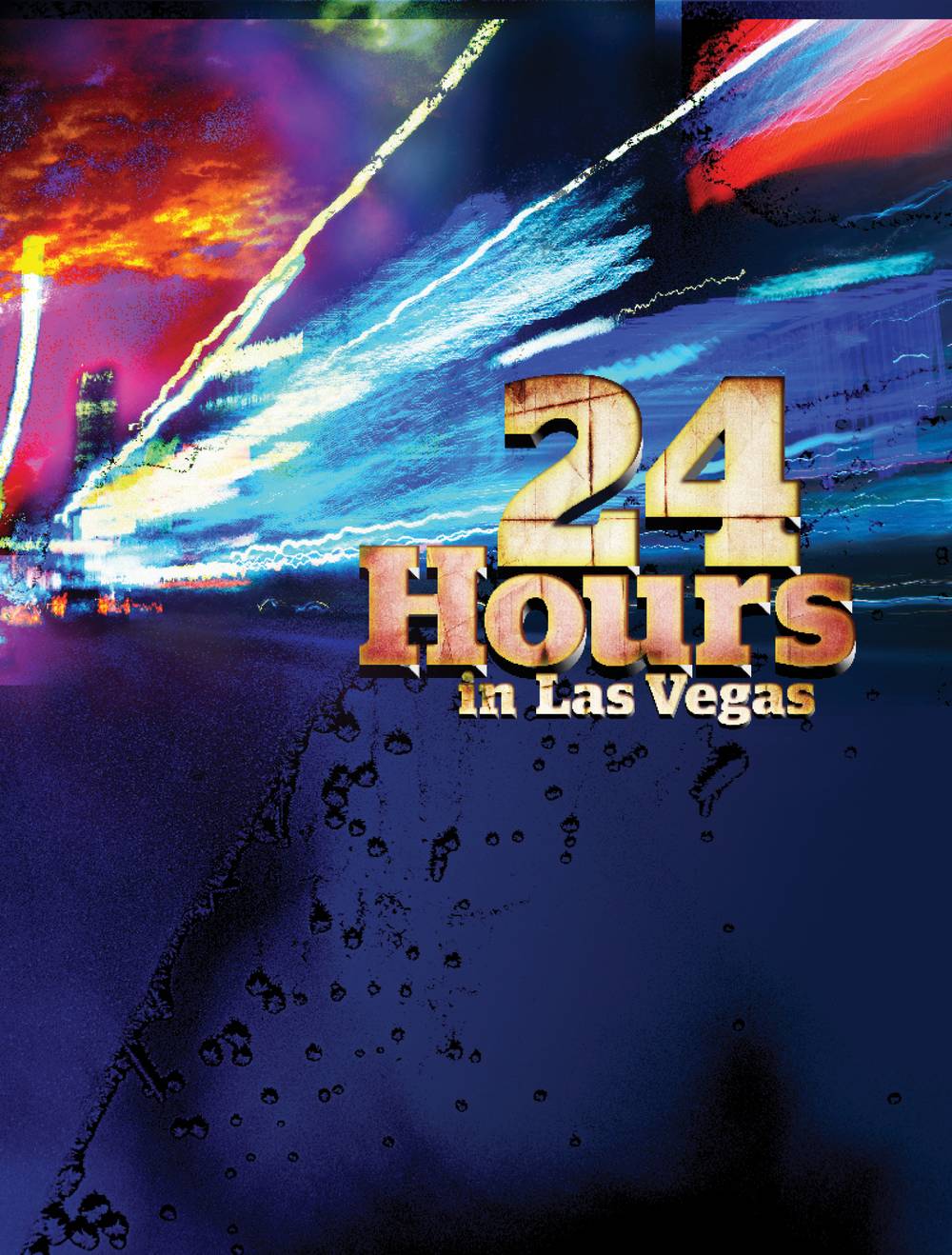
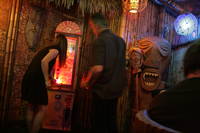

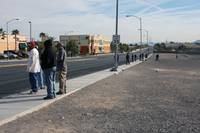


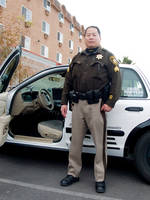
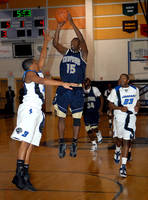
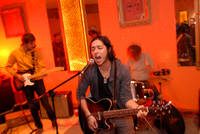
Previous Discussion: